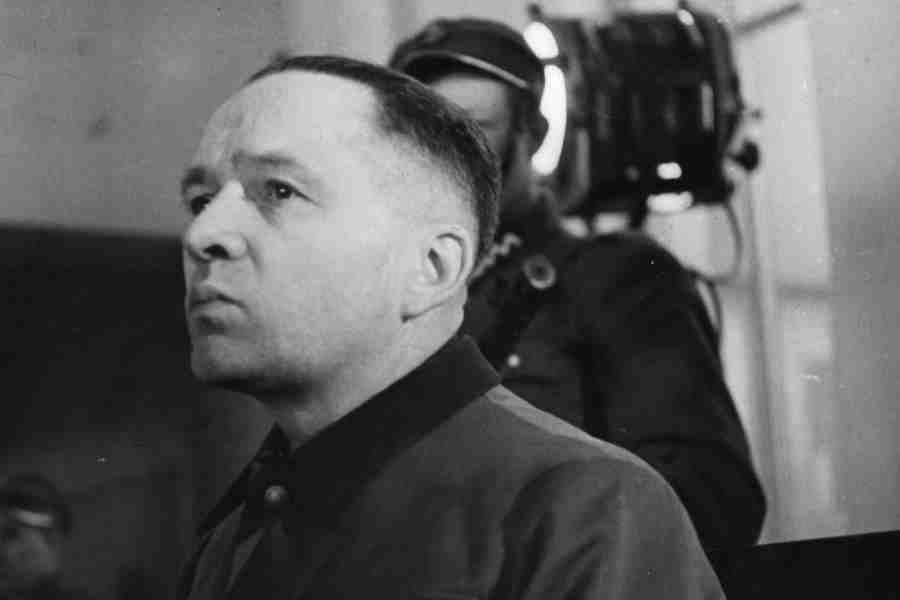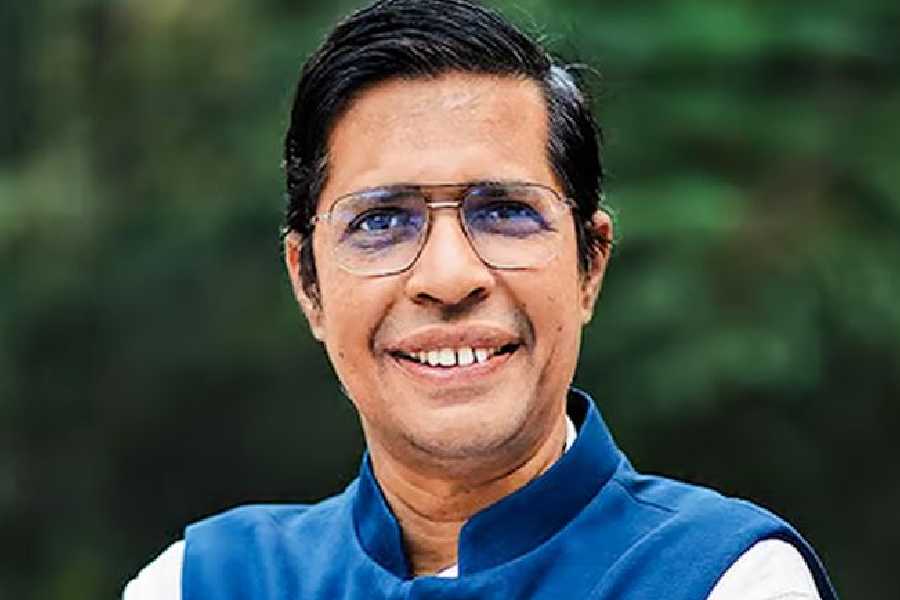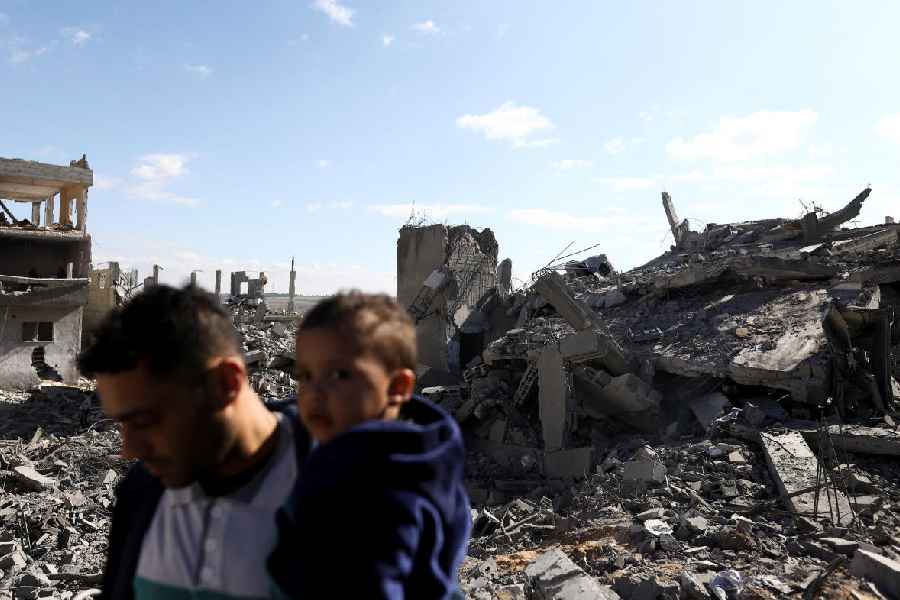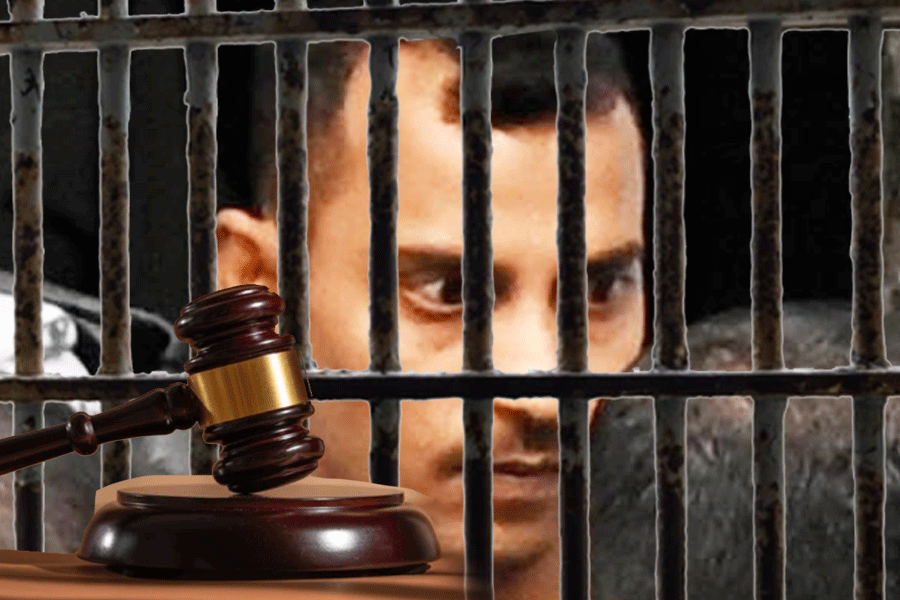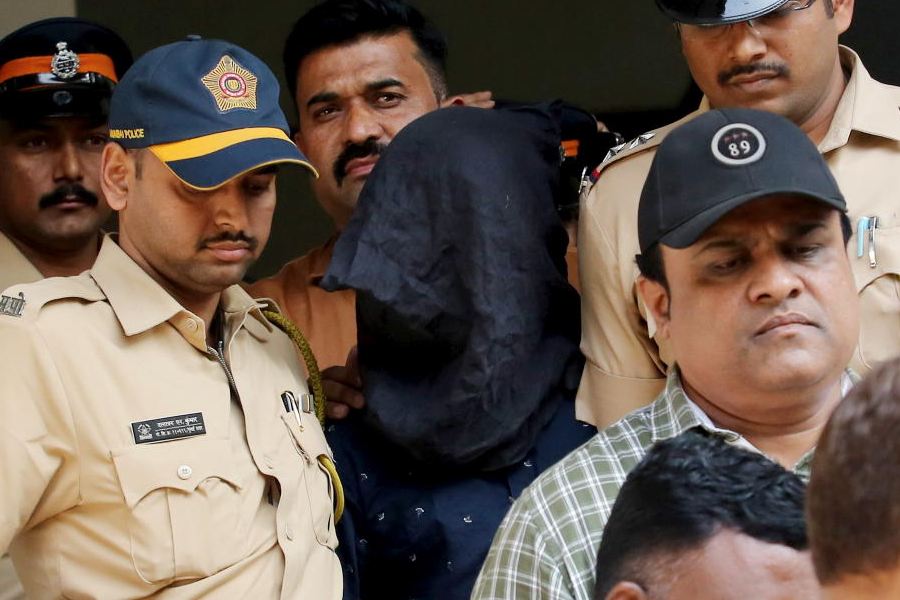The mother lived for 42 years in a three-storey house overlooking a former gas chamber and a gallows at Auschwitz, sometimes losing sleep at the thought
of what had happened on the other side of her garden wall.
But the house in Oswiecim, southern Poland, once the home of the death camp’s wartime commandant, Rudolf Höss, was “a great place to raise children”, said Grazyna Jurczak, 62, a widow who raised two sons there.
The home, the subject of the Oscar-winning movie The Zone of Interest, had “safety, silence, a beautiful garden”, easy access to a river across the road and, in winter, space for an ice-skating rink for her two boys, she said.
Alone in the house after her husband died, she finally decided to leave. One reason, she said, was that she was disturbed by people who, after watching The Zone of Interest, were tramping through her garden, peering through her windows and reminding her of her home’s connection to the Holocaust.
Last summer, Jurczak agreed to sell her stake in the home to the Counter Extremism Project, a New York-based group that wants to open the house to visitors. She moved out in August, and in October the New York group completed its acquisition of the home and an adjacent house built after the war.
“I had to get out of there,” Jurczak said at her new home in a modern apartment block in Oswiecim, over 1km from her former house.
Jurczak declined to say how much the house was sold for but indicated that it was somewhat more than the property’s estimated value of around $1,20,000.
Mark Wallace, a lawyer and former US diplomat who is the chief executive of the Counter Extremism Project, also declined to give the price, saying only that once other family members were paid for their stakes in the property, the total price was “significantly more” than what Jurczak had indicated. He also said his organisation “wanted to do right” by Jurczak’s family but “did not want to pay a big premium for a former Nazi property, even if we could”.
Now the house, at 88 Legionow Street, just outside the camp’s perimeter fence, is being prepared to receive visits by the public for the first time, as part of commemorations for the 80th anniversary of the Soviet Army’s liberation of Auschwitz.
The Auschwitz-Birkenau State Museum, a Polish institution in Oswiecim committed to the remembrance of Nazi victims, will be hosting dozens of world leaders on January 27.
At the house, workers hired by the new owners have removed 14 dumpsters of debris and stripped away wallpaper and other post-war additions. That has left the property much as it was when the Höss family lived there from 1941 to late 1944, including the Nazi-era lock on the bathroom door reading “frei/besetzt”, German for free/occupied.
A mezuzah, a parchment containing biblical verses, has been attached to the front door frame to honour Jewish tradition — and repudiate the fanaticism of its former occupant, the Auschwitz commander. After the war, Commandant Höss recalled how the successful experimental gassing of Russian prisoners in 1941 “set my mind at rest, for the mass extermination of the Jews was to start soon”.
He was hanged in 1947 at a gallows placed between his former home and a Nazi crematory.
On a table in a downstairs corner room that Commandant Höss used as a home office lies a heap of torn and crumpled Nazi-era newspapers and other wartime artefacts found after the house was sold. There is also a coffee mug, embossed with the seal of the SS, and German beer bottles.
Retrieved from the attic, where they had been stuffed to block a hole, were the striped trousers once worn by an Auschwitz prisoner. Researchers are trying to work out who wore them by deciphering a faded prisoner number, written next to a small red triangle signifying that the wearer was a political prisoner and a nearly vanished yellow star designating a Jew.
“This house has been closed for 80 years. It was out of reach to the victims and their families. Finally, we can open it to honour survivors and show that this place of incredible evil is now open to all,” Wallace said.
The plan, Wallace said, is to turn the house, along with the adjacent property, into the Auschwitz Research Center on Hate, Extremism and Radicalisation, a new organisation that will work to expand the pledge of “Never Again” from historical memory to current action.
Piotr Cywinski, a Polish historian and director of the Auschwitz-Birkanau Museum since 2006, said his state-run institution wanted to preserve its core mission of remembrance but saw value in supporting a project focused on the present and future, as well as the past.
“Fighting against today’s reality is easier for an NGO than for a state institution,” he said, lamenting the rise across Europe of populism, which he calls “the cancer of democracy”.
The new centre will encompass the entire territory of Commandant Höss’s wartime property, including a long sealed-off garden area where he met with Hitler’s security chief, Heinrich Himmler, Josef Mengele, the “angel of death” doctor, and other Nazi dignitaries tasked with exterminating Jews. Daniel Libeskind, an American architect, has been commissioned to redesign the property.
Libeskind said he had drawn up preliminary plans that envisage turning the interior of the house into “a void, an abyss” — the external walls are protected by a Unesco preservation order — and the construction of a new partly buried structure in a garden area with meeting rooms, a library and a data centre.
More than two million people visit the former Auschwitz camp each year and, the architect said, come away “horrified and mesmerised by death” but also need “to engage with contemporary antisemitism and other extremism in our political culture”.
Jacek Purski, the director of a Polish anti-extremism group, who is involved in the project, said he wants to use the house and the past Nazi horrors as a weapon against what he sees as a resurgence of extremist ideologies.
“A house is a house,” Purski said, looking out of a second-storey window of the former Höss house towards the chimney of a former Nazi crematory. “But it is in uninteresting, regular houses like this where extremism is happening today.”
Jurczak, the former owner, said she still struggles to reconcile happy, ordinary memories of the house with its gruesome past.
Reminiscing about her family’s time there she suddenly stopped herself: “I worry that I sound like Höss’s wife,” she said, referring to Hedwig Höss, the commandant’s wife. In the movie, Hedwig gushes about her Polish home as “paradise” and is shown trying on a fur coat stolen from a prisoner sent to slaughter by her husband.
The commandant’s wife, Jurczak decided after watching the movie, “was perhaps even worse than her husband”, in her indifference to human suffering.
While awaiting execution in a Polish jail after the war, Höss, the former commandant, wrote an autobiography that Primo Levi, the Italian writer and Auschwitz survivor, described as the work of a “drab functionary” who “evolved step by step into one of the greatest criminals in history”.
The house where Höss lived was built between the two great wars of the last century by a Polish military officer serving in an adjacent army camp, which was seized by the Nazis after their 1939 invasion of Poland and turned into an extermination factory. At least 1.1 million men, women and children were murdered there, mostly in gas chambers.
Grabbed by the SS as a home for the Auschwitz commandant, who changed the street number to 88, a numerical code for Heil Hitler, the house was returned to its original owner after the war and later sold to the family of Jurczak’s husband, who owned it until last year. Cywinski, the Auschwitz-Birkanau museum director, said he was eager to work with the Counter Extremism Project, in its efforts to combat extremism.
Extremism, he said, “is unfortunately not a mental illness; it is a method” that exploits widespread feelings of frustration. Ordinary people with ordinary ambitions, he added, can turn into monsters.
Höss, he said, “was a wonderful father to his kids and, at the same time, the main organiser of the most brutal killings in the history of the world”.
New York Times News Service

